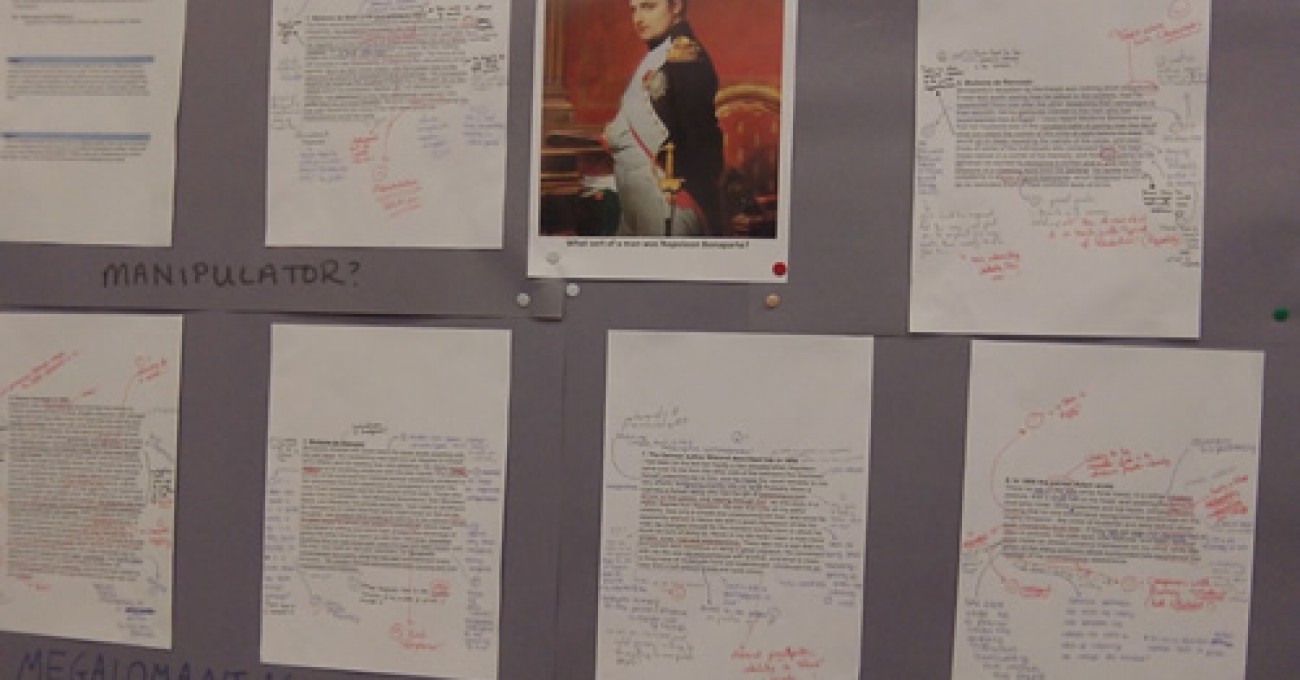This is a great way of getting students to conduct some close reading of detailed sources. The lesson is framed around a key question for investigation (which could be about causes, consequences, significance…), and then carefully selected sources are placed at different points around the room. Students move between the sources in pairs, in silence, annotating and asking questions as they go. The findings are then drawn together at the end.
Stage 1
Prior to the lesson, the teacher will print off these sources and place them on different tables.
The class will be divided into pairs, and each pair will be directed to a different table with a different source.
2 minutes: Each pair of students reads their source in silence.
3 minutes: Still in silence, students annotate their sources by underlining key words / phrases and either (a) Making their observations, or (b) Asking questions, in the margin. Each partner can answer these questions if they wish. During this time, the teacher will move between the groups silently adding extra questions / observations.
Stage 2
All pairs will now be moved around the class to look at a different source. Repeat Stage 1 for as long as time allows.
At the end of the process the teacher will lead a discussion about what has been learned.
The completed sheets should be put on display where they can be compared.
Students should consolidate by answering the key question for discussion.
Download Sample Exercise: “Silent Discussion: What sort of a man was Napoleon?” (via www.activehistory.co.uk)



